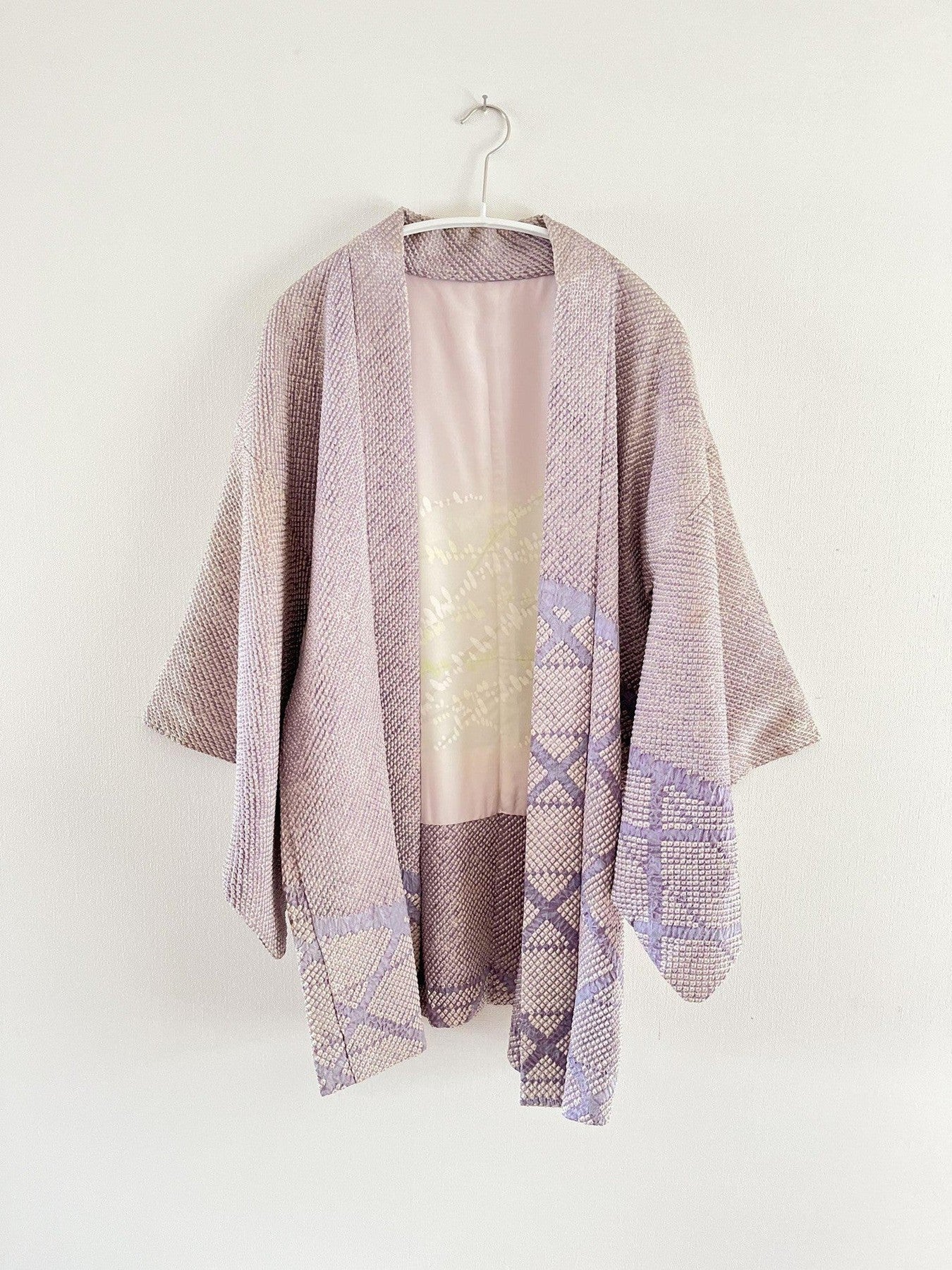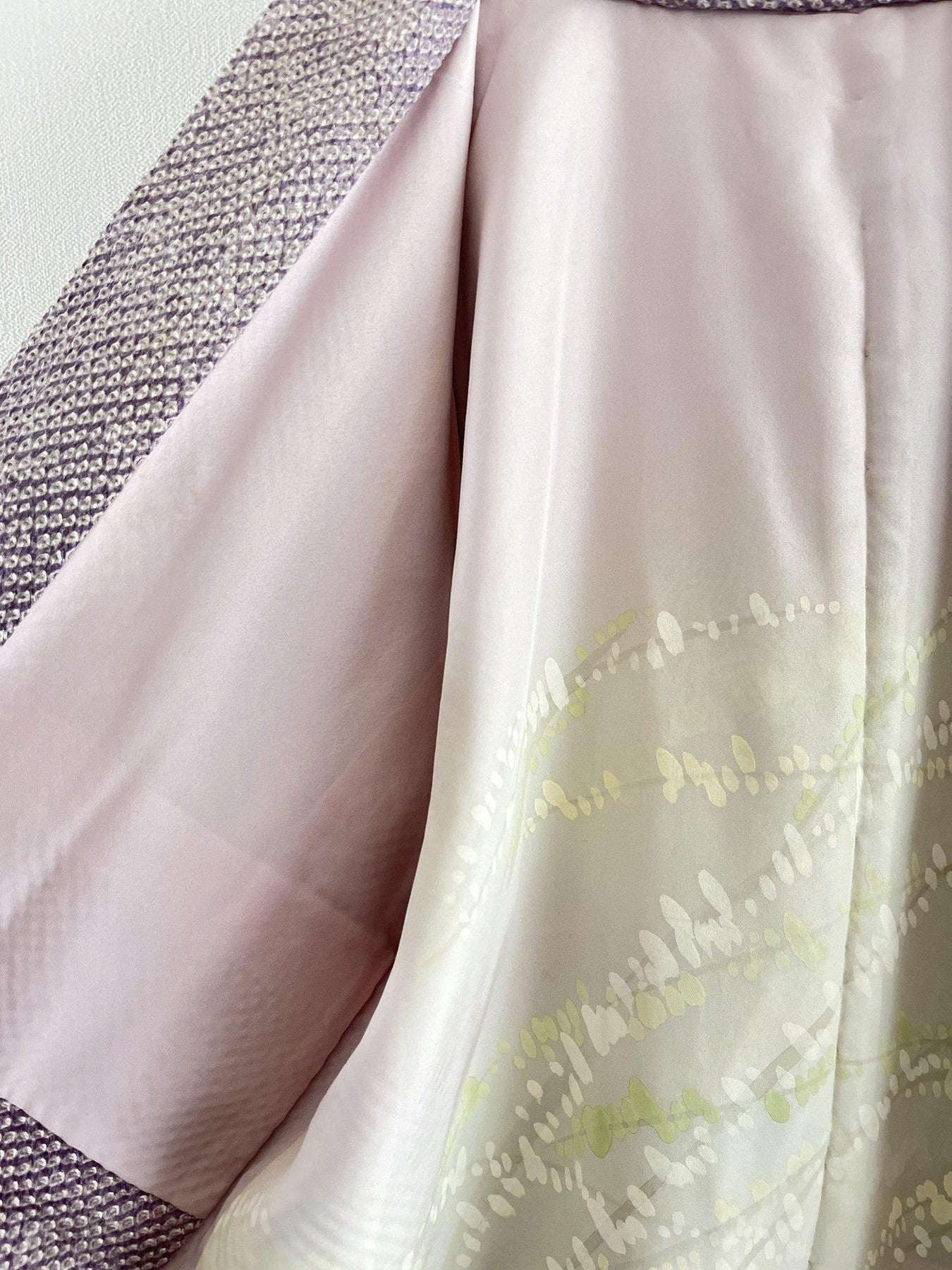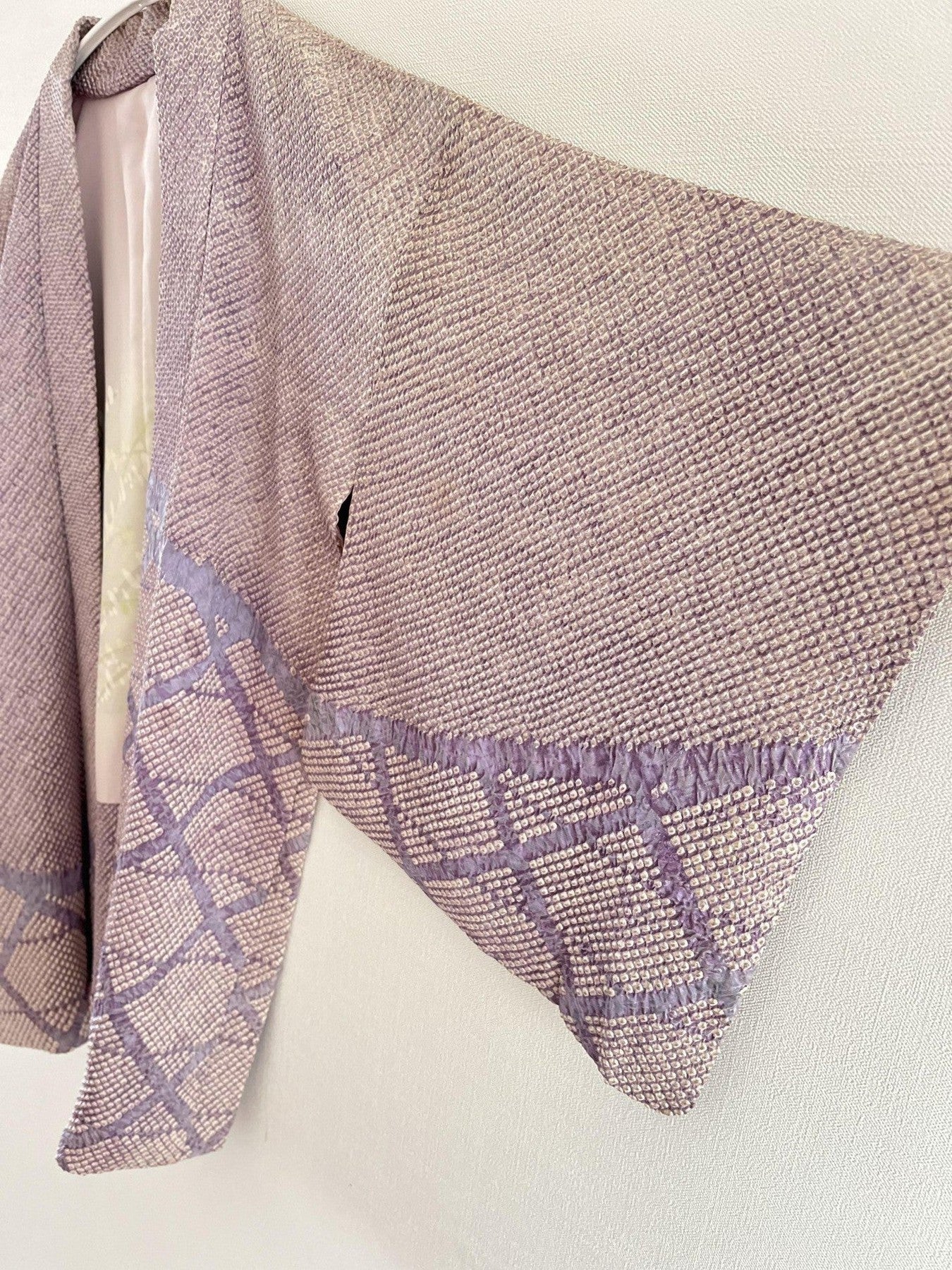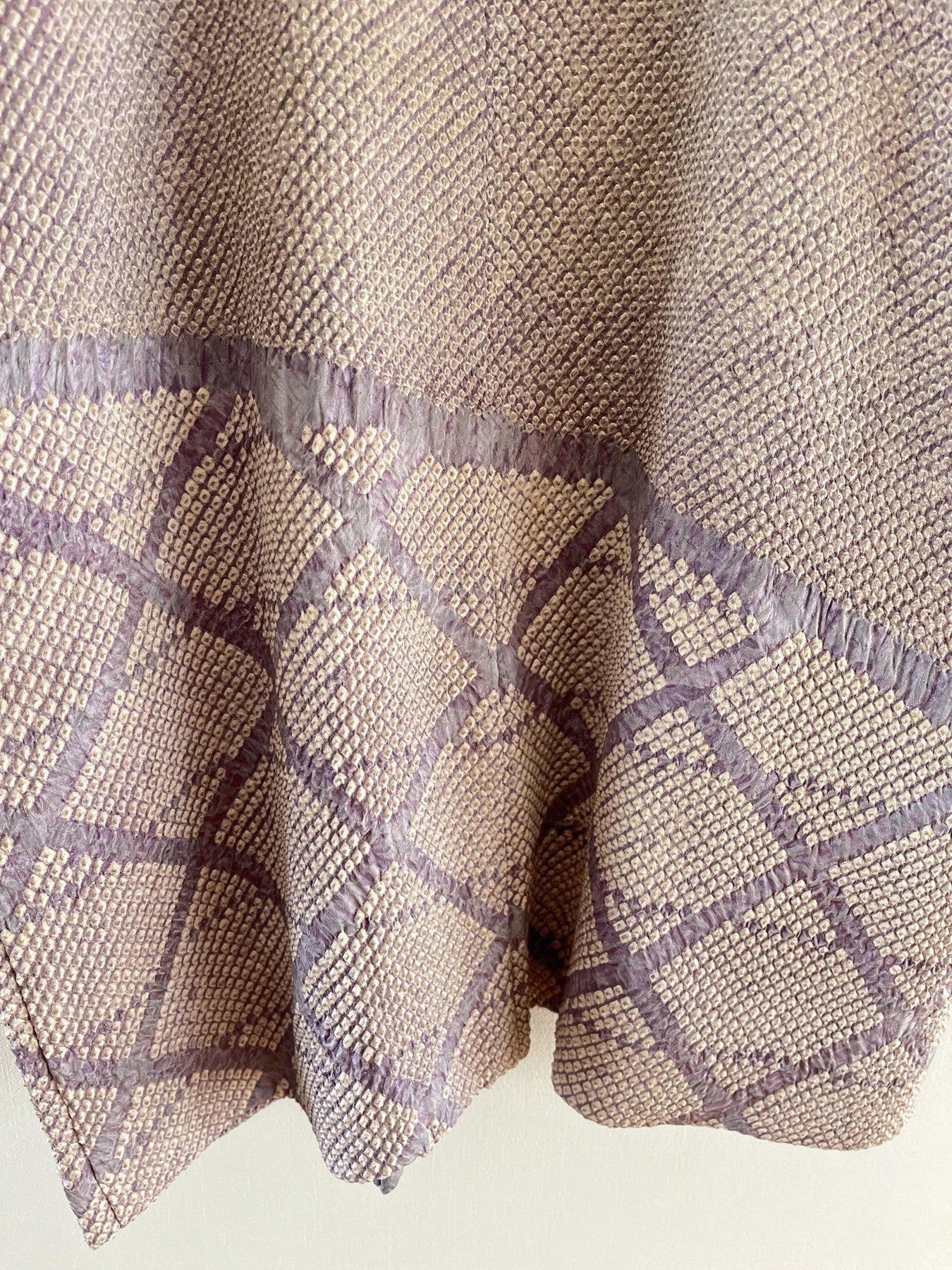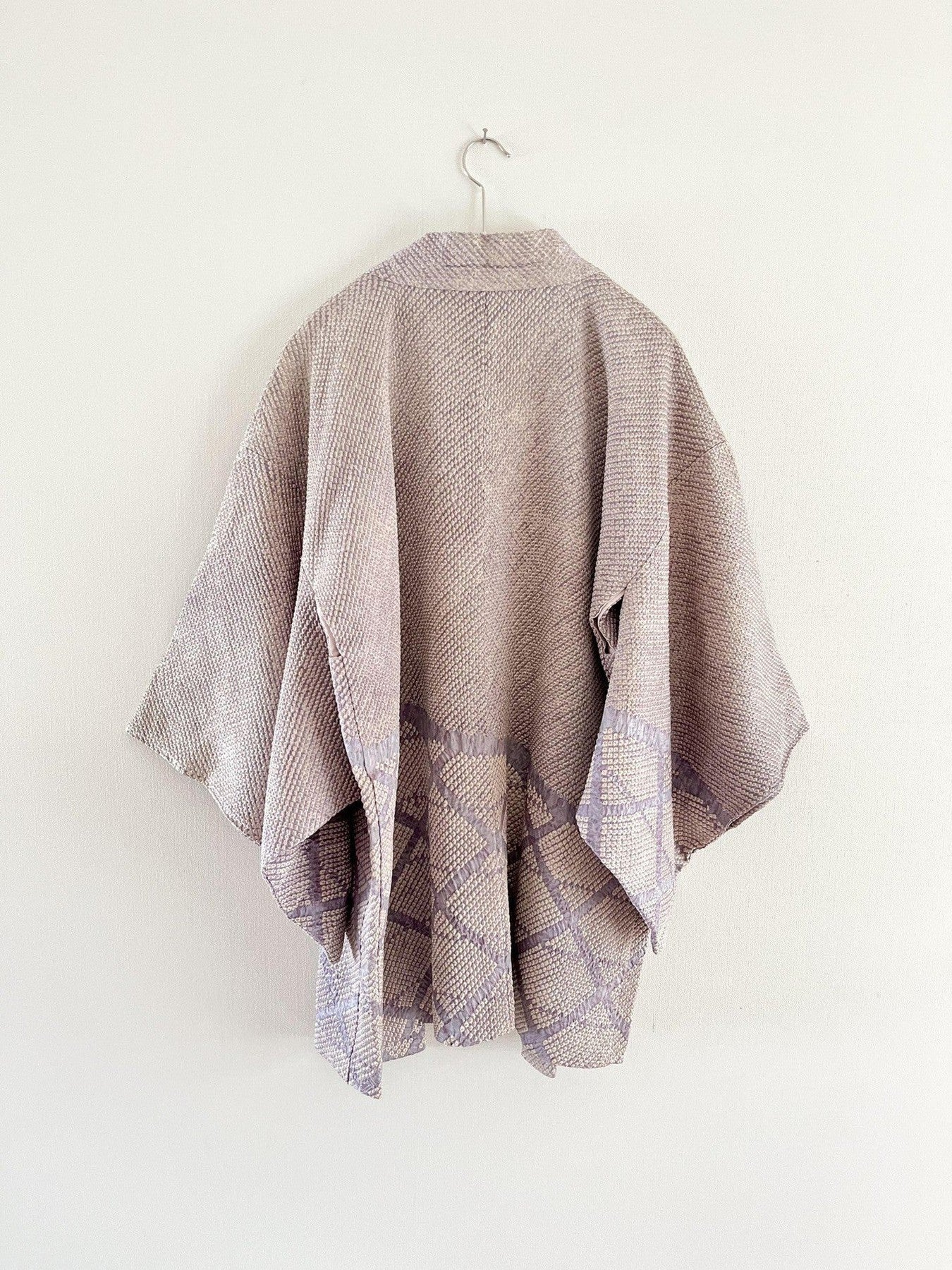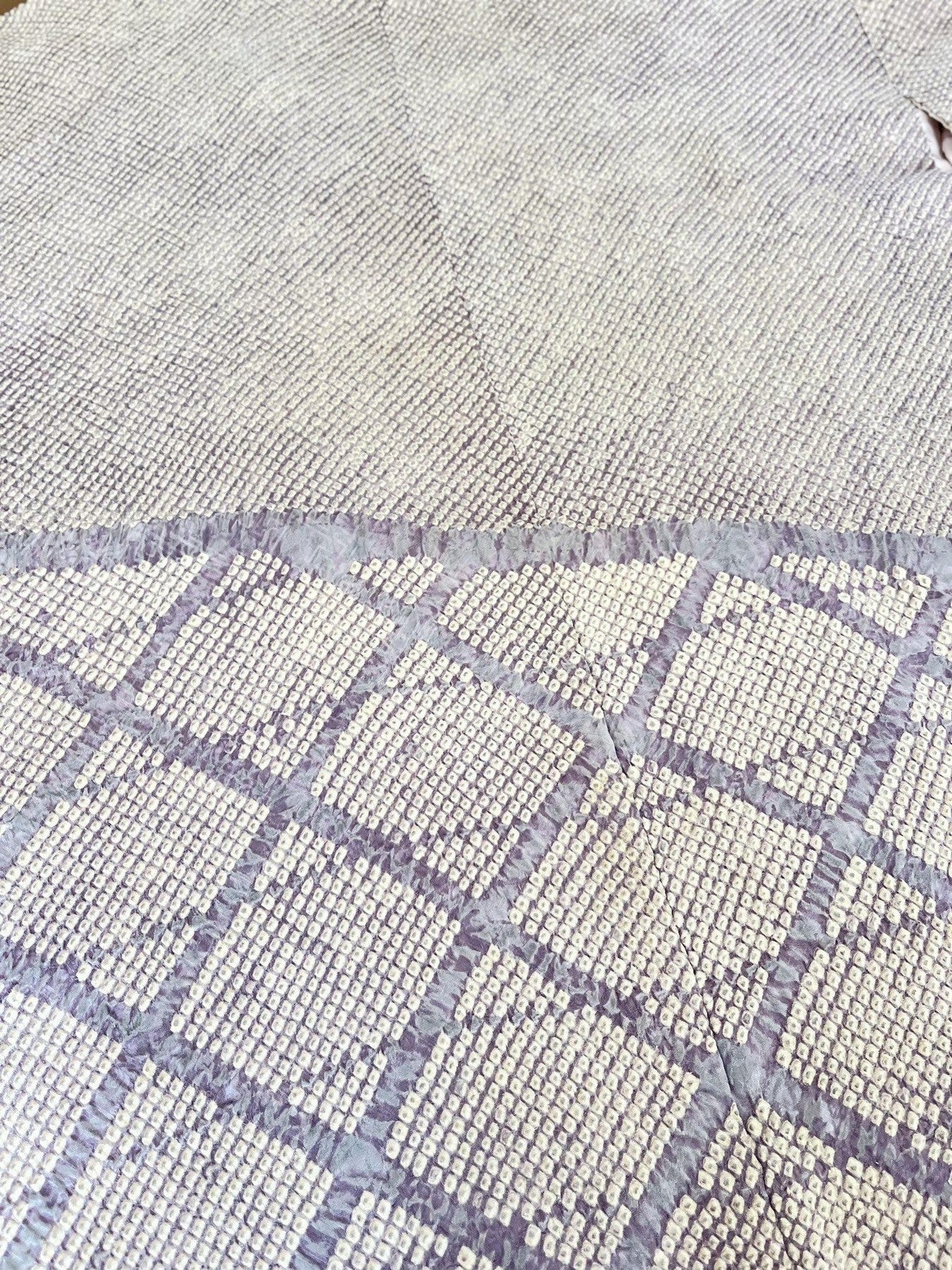1
/
of
8
Lavender Kagome Shibori Haori
Lavender Kagome Shibori Haori
Regular price
€400
Regular price
Sale price
€400
Unit price
/
per
Couldn't load pickup availability
This women's haori features a shibori tie dyed kagome (woven bamboo baskets) pattern.
Circa 1950-1960s
Japanese silk
Hand sewn
Measurements
Length (collar bottom to hem): 75cm
Width (pit to pit): 58cm
Collar center to sleeve end: 64cm
